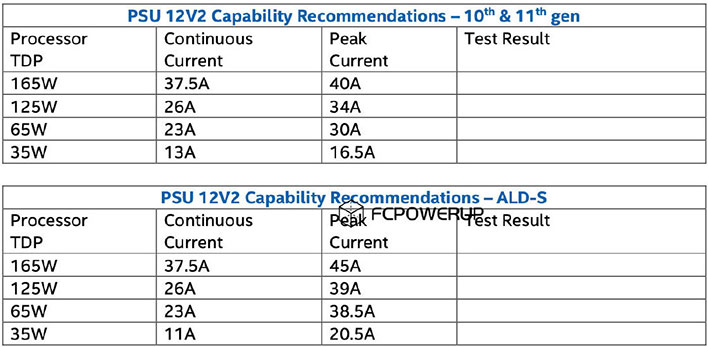We have seen some
encouraging performance leaks related to Intel's upcoming Alder Lake-S processors, and while we are hesitant to put much stock into unconfirmed figures, we are at least cautiously optimistic it will be a worthy upgrade over Rocket Lake. Alder Lake might also consume more peak power than Rocket Lake, while on the topic of leaks.
As has been well documented by now, Alder Lake represents a wholesale shift to a heterogeneous (or hybrid) architecture that combines high performance (or 'big') Golden Cove cores with more power efficient (or 'small') Gracemont cores in the same package. The idea being, workloads can tap the big cores as needed, while less demanding activities can lean on the small cores.
This is the model Arm has been using for a long time (under its
big.LITTLE branding) and it has worked exceptionally well for mobile applications—practically every handset runs on Arm technology that has been licensed to the likes of Qualcomm and others.
On the manufacturing side, Alder Lake is being built on Intel's 10-nanometer Enhanced SuperFin process. Or to use
Intel's rebranded node terminology, it's leveraging the company's 'Intel 7' process (same thing, just a different name).
As we wait to see how it all unfolds in the real world, someone has leaked a chart outlining Intel's supposed
power requirements for its Alder Lake-S desktop processors. It highlights the 12V2 rail that powers the CPU. Have a look...
 Click to Enlarge (Source: FCPOWERUP)
Click to Enlarge (Source: FCPOWERUP)
Looking at the PSU 12V2 recommendations, Intel is breaking down its Alder Lake-S stack into four tiers, which correspond to its enthusiast (165W), unlocked (125W), mainstream (65W), and low power (35W) product offerings.
The continuous current is the same for the three higher TDP stacks, compared to Rocket Lake and Comet Lake, at 37.5A (165W), 26A (125W), and 23A (65W), and actually a little lower for Alder Lake-S at the 35W category, at 11A versus 13A. However, the peak current is higher across the board for Alder Lake-S. As in, up to a little over 28 percent higher.
Here's the breakdown...
- 165W: 40A/480W (Comet Lake and Rocket Lake) to 45A/540W (Alder Lake) = +12.5 percent
- 125W: 34A/408W (Comet Lake and Rocket Lake) to 39A/468W (Alder Lake) = +14.7 percent
- 65W: 30A/360W (Comet Lake and Rocket Lake) to 38.5A/462W (Alder Lake) = +28.3 percent
- 35W: 16.5A/195W (Comet Lake and Rocket Lake) to 20.5A/246W (Alder Lake) = 24.2 percent
That averages out to a 19.9 percent jump for the entire series, with peak power jumping 50W to 100W. This represents the power consumption in very short bursts (measured in milliseconds), the exactly length of which depends on the specific processor.
According to FCPOWERUP, a Chinese site that specializes in PSU reviews, users may need to account for the added wattage when buying a power supply. Whether that is actually the case or not, only time will tell—Alder Lake's hybrid design is supposed is geared towards power efficiency, after all. However, this is definitely something we will be keeping an eye on.



